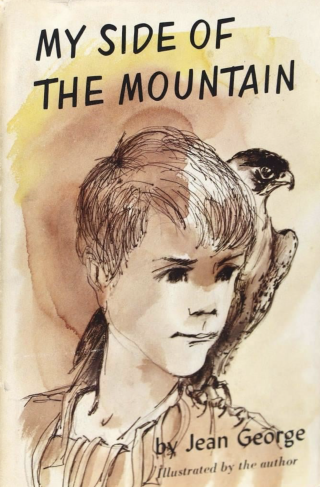It is the late 1950s, and a boy, twelve years old, runs away from home. He makes his way from New York City to the Catskills, where he carves a home from a hollowed-out hemlock on his grandfather’s abandoned farm. His name is Sam but could have been Samantha, for this boy—one of the most famous kids in children’s literature, the hero of Jean Craighead George’s beloved My Side of the Mountain—was meant to be a girl, meant to be a woman. Meant to be the author herself.
The morning George first sits down to write, her husband has just lost his job teaching at Vassar. They have three kids: one is only a couple months old. Her daughter is grumpy; her son doesn’t want to go to preschool, her marriage is on the rocks, and the sink is full of dishes. I read in her autobiography that, like many women of that era, she is enduring a marriage that doesn’t feel like her life, not for a woman who grew up in a family of naturalists exploring the outdoors, someone who reported for the Washington Post during the Second World War before sacrificing her career to be a wife. She is a woman who yearns for more. She wants to leave her marriage, but can’t—not yet. Women in the 1950s don’t do that. Instead, she writes a new child into being. She wants this child to be girl, her own young self, but worries no one will accept a girl surviving alone in the wilderness. So, Jean flees to the woods as Sam Gribley and gives him a wild adventure on a hillside outside Delhi, New York, not far from where I now live.
Published in 1959, My Side of the Mountain has never gone out of print. It’s been awarded Newbery Honors, was adapted into a film, and has garnered stacks of fan mail from generations of readers. Many are letters from kids who grew into adults who became field biologists and forest rangers. They wrote to her of their reading habits, their dreams of living and working outside, of becoming and being. They were city kids, rural kids, and suburban kids, like me. In Sam, I found a model of how to be in the outdoor world.

